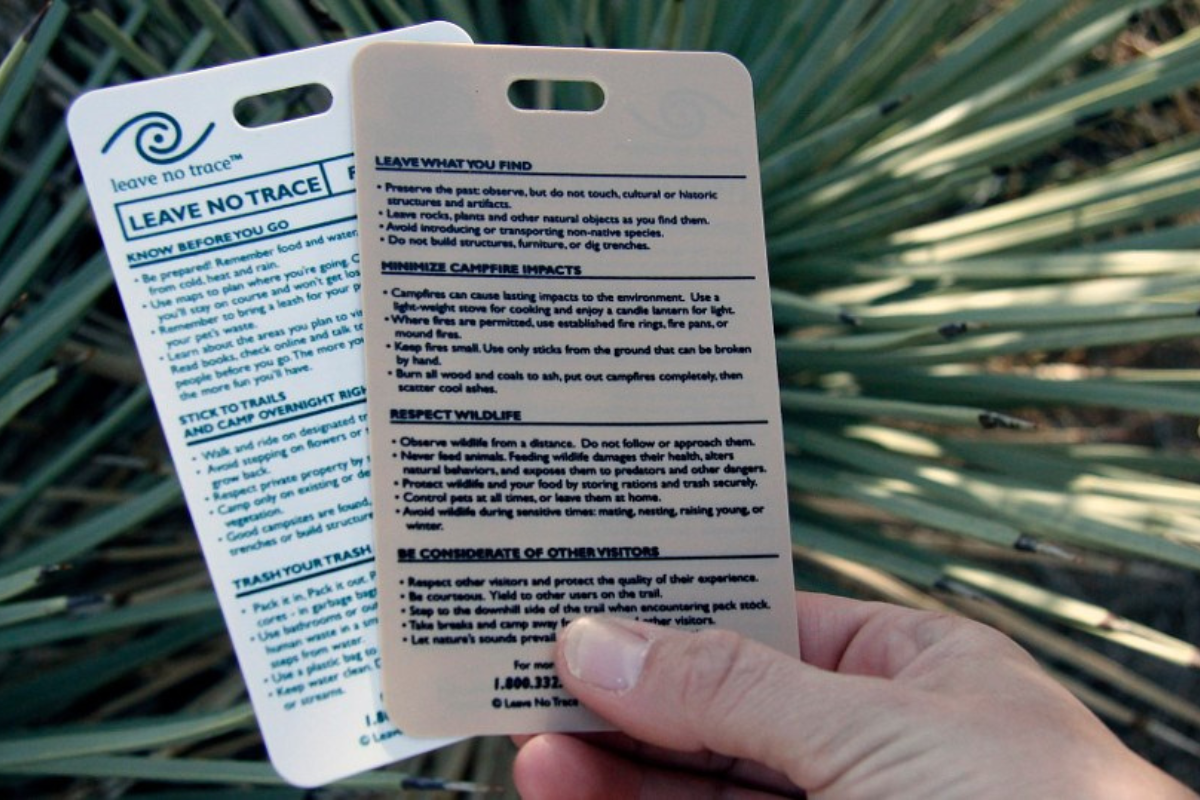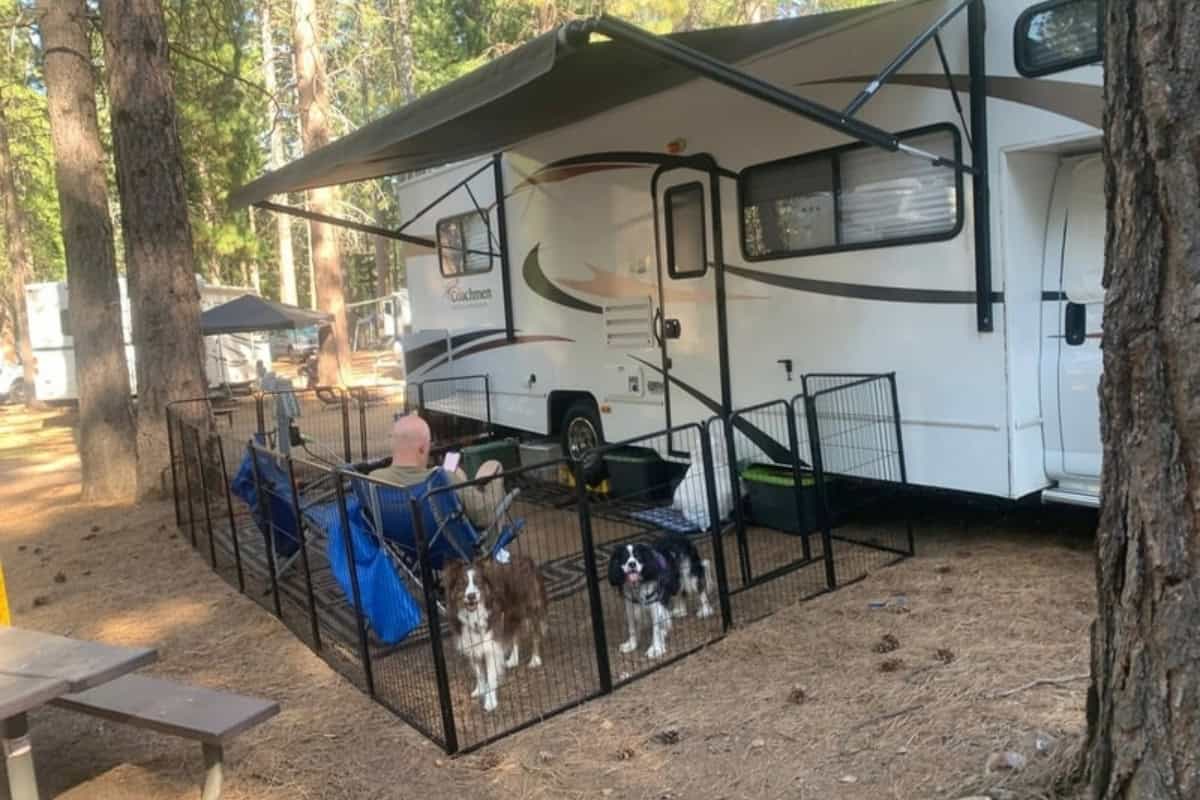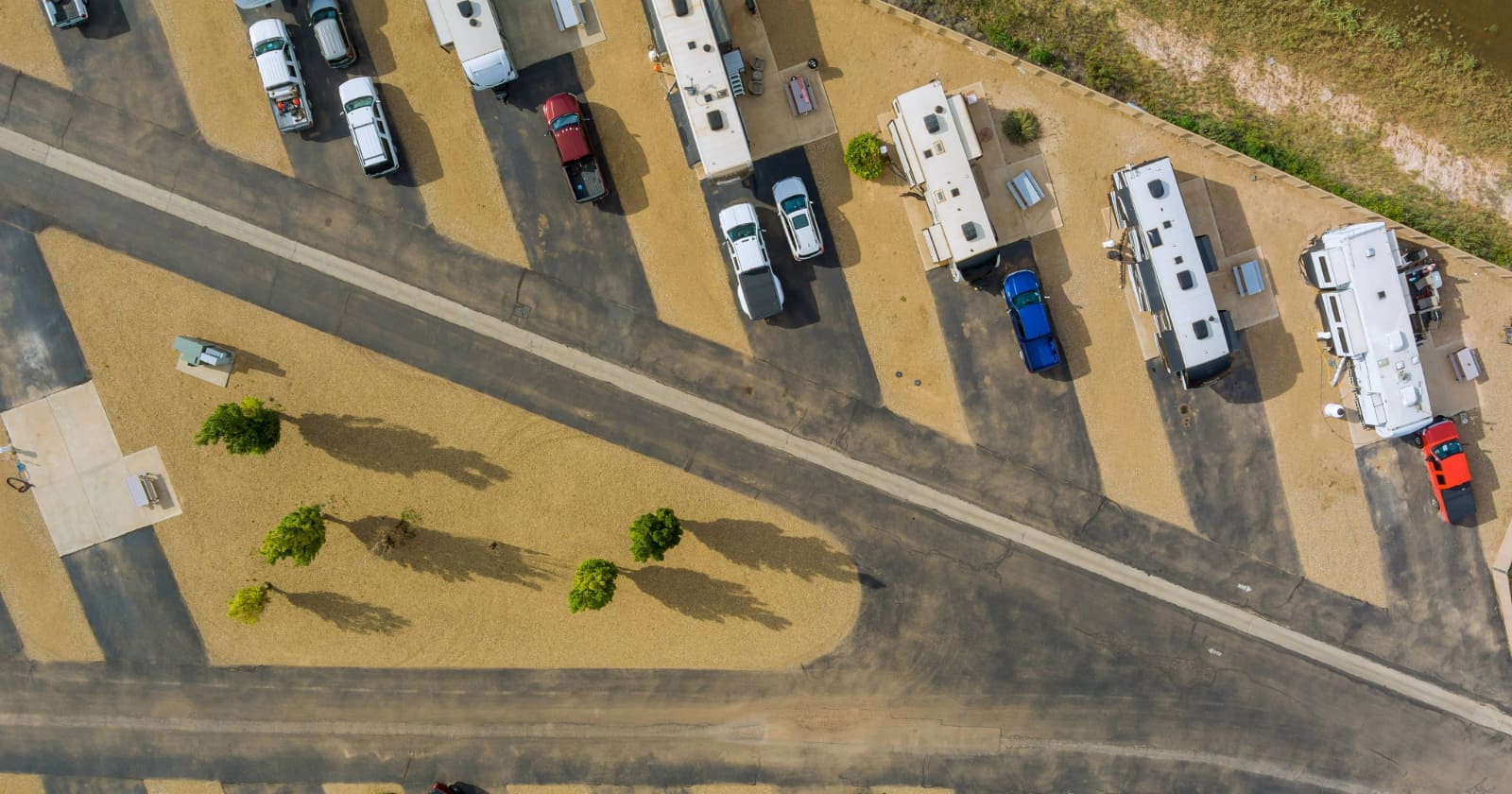
What Are The 7 Leave No trace Principles?
Millions of people enjoy being outdoors in nature every year. This comes with a shared responsibility to protect the environment we all love. Are you following the seven no trace principles while RVing?
Preserving the environment should be a top priority for any outdoors person. With the number of outdoor enthusiasts growing every year, it is more important than ever to enjoy nature responsibly. The most beautiful landmarks are often the most popular, and the high numbers of people visiting these areas becomes of particular concern.
Regardless of whether it is the Grand Canyon or an unused backwoods campsite, conserving all areas of nature is the key to sharing and enjoying it in the future. It’s for this reason that the leave no trace principles were developed.
The leave no trace principles & why they’re important
Established by the Leave No Trace Center for Outdoor Ethics, and based on research by the US Forest Service, National Park Service, and Bureau of Land Management, the leave no trace principles are the go-to guide for the outdoors.
Years of combined study of the different areas throughout the nation’s parks and waterways have given us a clear picture of the effects of humans on nature. Allowing people to freely use the vast landscape available while minimizing harmful effects is a delicate balance.
The purpose of the leave no trace principles is to achieve this balance between humans and nature. You can consider them the rules of the game that is enjoying nature, broken down into seven main principles that each offer suggestions for responsible enjoyment of your surroundings.
Below are the seven no trace principles as described by the National Park Service. These principles can also be found on the websites of the U.S. Fish And Wildlife and U.S. Forestry Service, as well as state and municipal websites.
1. Plan ahead and prepare
- Know the regulations and special concerns for the area you’ll visit.
- Prepare for extreme weather, hazards, and emergencies.
- Schedule your trip to avoid times of high use.
- Visit in small groups when possible. Consider splitting larger groups into smaller groups.
- Repackage food to minimize waste.
- Use a map and compass or GPS to eliminate the use of marking paint, rock cairns, or flagging.
2. Travel and camp on durable surfaces
- Durable surfaces include maintained trails and designated campsites, rock, gravel, sand, dry grasses, or snow.
- Protect riparian areas by camping at least 200 feet from lakes and streams.
- Good campsites are found, not made. Altering a site is not necessary.
In popular areas:
- Concentrate use on existing trails and campsites.
- Walk single file in the middle of the trail, even when wet or muddy.
- Keep campsites small. Focus activity in areas where vegetation is absent.
In pristine areas:
- Disperse use to prevent the creation of campsites and trails.
- Avoid places where impacts are just beginning.
3. Dispose of waste properly
- Pack it in, pack it out. Inspect your campsite, food preparation areas, and rest areas for trash or spilled foods. Pack out all trash, leftover food, and litter.
- Utilize toilet facilities whenever possible. Otherwise, deposit solid human waste in catholes dug six to eight inches deep, at least 200 feet from water, camp, and trails. Cover and disguise the cathole when finished. Leave no trace principles include everything!
- Pack out toilet paper and hygiene products.
- To wash yourself or your dishes, carry water 200 feet away from streams or lakes and use small amounts of biodegradable soap. Scatter strained dishwater.
4. Leave what you find
- Preserve the past; examine and photograph, but do not touch cultural or historic structures and artifacts.
- Leave rocks, plants, and other natural objects as you find them.
- Avoid introducing or transporting non-native species.
- Do not build structures, furniture, or dig trenches.
5. Minimize campfire impacts
- Campfires can cause lasting impacts on the environment. Use a lightweight stove for cooking and enjoy a candle lantern for light.
- Where fires are permitted, use established fire rings, fire pans, or mound fires.
- Keep fires small. Only use down and dead wood from the ground that can be broken by hand.
- Burn all wood and coals to ash, put out campfires completely, then scatter cool ashes.
6. Respect wildlife
- Observe wildlife from a distance. Do not follow or approach them.
- Never feed animals. Feeding wildlife damages their health alters natural behaviors, habituates them to humans, and exposes them to predators and other dangers.
- Protect wildlife and your food by storing rations and trash securely.
- Control pets at all times, or leave them at home.
- Avoid wildlife during sensitive times: mating, nesting, raising young, or winter.
7. Be considerate of other visitors
- Respect other visitors and protect the quality of their experience.
- Be courteous. Yield to other users on the trail.
- Step to the downhill side of the trail when encountering pack stock.
- Take breaks and camp away from trails and other visitors.
- Let nature’s sounds prevail. Avoid loud voices and noises.
How to use these leave no trace principles
Looking at that long list of guidelines, you may be thinking it seems like a lot of rules that will be hard to follow. In reality, most of us follow these rules all the time without even realizing it.
The no trace principles are, after all, just good practice guidelines for being a responsible person in nature. Anyone who appreciates the great outdoors already has a strong respect for conservation and is likely following these principles.
However, not everyone is an avid outdoors person, and these principles are an easy way to familiarize people with these best practices. It is also a great way to introduce children to a responsible and sustainable outdoor life.
The National Parks Service makes it super easy to keep these principles close and easy to understand with no trace cards. These cards outline the seven principles and can be kept on you for quick reference. Parks service employees along with conservation officers are also a great source of information and will gladly assist with any questions.
The first principle, plan ahead and prepare, should include familiarizing yourself with the principles list. The no trace principles apply to all areas; however, there may be extra guidelines specific to an area you plan to visit.
Many parks offer interactive activities as well as guided tours that emphasize the no trace principles and can be a fun way to learn more about them. As mentioned, most of the items on the list will come naturally to you as a responsible outdoors person. If a situation arises that you are unsure of, the no trace cards are your quick reference, followed by contacting park or conservation offices.
Spreading the word
It is everyone’s job to help spread the knowledge of leave no trace, and experienced outdoors persons should be willing to assist others. Some people are unaware of the principles; others may simply forget while having fun or preoccupied. If you are approached by someone, whether it be a park ranger or a fellow outdoors person, be respectful as they are just trying to help.
Enjoying the outdoors is both a great gift and a great responsibility we all share. Taking on this responsibility is a must for anyone who plans to spend time in nature. By everyone doing their part and following the no trace principles, we will leave a healthier environment for future generations to enjoy.
Get tips from other RVers
One of the best parts about RVing is engaging with the community of traveling enthusiasts. iRV2 forums allow folks to chat with other RVers online, and get other perspectives on everything RVing, including products, destinations, RV mods, and more.
Continue reading:




